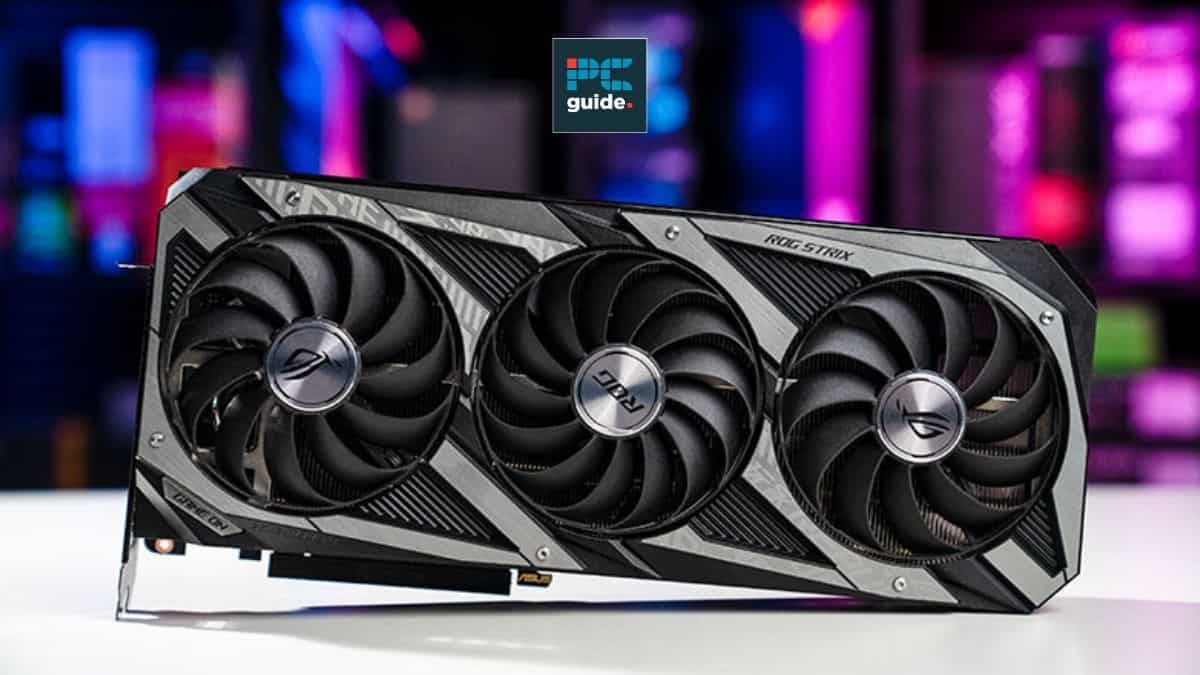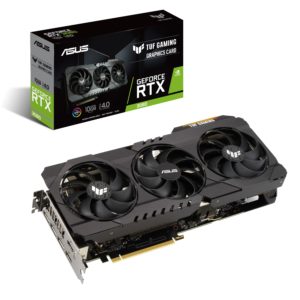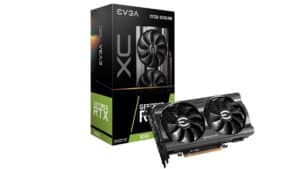Best GPUs for emulation in 2025 – Our top choices

Table of Contents
Emulation has become an increasingly popular way for gamers to relive classic titles or play games from other platforms. However, achieving a smooth and stable performance can be a challenge without the right hardware. A crucial component for optimal emulation is the GPU, which can significantly impact the quality of the emulation experience.
With so many options available, it can be difficult to determine the best GPU for emulation. In this article, we will explore some of the top GPU options for emulation, their key features, and how they perform in real-world scenarios.
Products at a Glance
How we selected the best GPUs for emulation
When it comes to picking the best GPUs for emulation, there are several important factors to consider. By weighing these factors against your specific needs and budget, you can find the best GPU for you.
One of the first factors to consider is compatibility. Ensure that the GPU you choose is compatible with the emulator software and the system you plan to emulate. Otherwise, you may run into compatibility issues that hinder performance or prevent games from running altogether. Next, if you plan to use emulators that can take advantage of multi-core GPUs, look for options with more cores to maximize performance. Furthermore, to prevent overheating and ensure longevity, choose a GPU with a robust cooling system. In essence, the better your GPU the better emulation. Consider compatibility, modern architecture, VRAM, clock speed, multi-core support, cooling, and performance benchmarks. Determine your budget and look for options that offer the best performance for your dollar.
Product Reviews
- Outstanding graphics performance tailored for emulation requirements
- Enhanced visual quality with support for real-time ray tracing
- Ample VRAM enables smooth rendering of high-resolution textures
- Limited availability due to high demand and supply constraints
- Relatively higher power consumption compared to some competing models
- May be considered overkill for emulation purposes
The Nvidia GeForce RTX 30 Series is renowned for its exceptional performance in both gaming and emulation, thanks to its cutting-edge Ampere architecture. Featuring real-time ray tracing and DLSS technology, these cards offer stunning visuals and enhanced framerates, elevating the emulation experience to new heights. Among the series, the NVIDIA GeForce RTX 3080 stands out with its robust CUDA cores and high memory bandwidth, making it an ideal choice for demanding emulation tasks, including 4K gaming and VR applications. Want more on this product? We have a dedicated RTX 3080 review in which we dive into this exact model. Be sure to check it out.
- Lower price than the RTX 3080
- Robust support for high-resolution gaming and VR experiences
- Exceptional graphics performance for gaming and emulation tasks
- Absence of certain advanced features available in competing Nvidia graphics cards
- Still high-end price for emulation
- Not as widely available as Nvidia
Here we have our second choice for the best GPUs for emulation. The AMD Radeon RX 6800 XT emerges as a formidable choice for emulation enthusiasts due to its impressive specifications and innovative features. With its high clock speeds and generous VRAM allocation, the RX 6800 XT excels in handling demanding emulation tasks, ensuring smooth performance and seamless gameplay transitions. Moreover, its support for features like Smart Access Memory enhances emulation experiences by optimizing data access between the GPU and compatible CPUs, resulting in improved performance and reduced latency.
Beyond its raw power, the RX 6800 XT’s architecture is well-suited for emulation, providing the necessary resources to accurately replicate older gaming environments while maintaining high frame rates and visual fidelity. Whether it’s emulating classic consoles or pushing the boundaries of newer systems, the RX 6800 XT stands as a reliable companion, offering the performance and features necessary to deliver an immersive and authentic emulation experience.
- Great performance per watt
- Over 50 percent faster than GTX 1050
- Great for small form factor builds
- Struggles in more demanding games
The MSI GeForce GTX 1650 Gaming X 4G is a mid-range GPU that offers excellent performance for emulation tasks. With 4GB of GDDR5 VRAM, a base clock speed of 1485 MHz, and 896 CUDA cores, the GTX 1650 Gaming X 4G provides solid performance in emulating various game consoles and systems.
One of the key advantages of the GTX 1650 Gaming X 4G is its affordability compared to higher-end GPUs. Despite its mid-range status, this GPU offers strong performance for its price range, making it an excellent choice for users who want good performance without breaking the bank.
The GTX 1650 Gaming X 4G is based on NVIDIA’s Turing architecture, which offers several benefits for emulation. This architecture features advanced shading and lighting techniques, allowing for more realistic graphics in emulated games. Additionally, the Turing architecture provides better power efficiency and improved memory bandwidth, resulting in better overall performance.
Overall, the MSI GeForce GTX 1650 Gaming X 4G is a great mid-range option for emulation tasks. Its affordability, strong performance, and excellent cooling system make it an attractive choice for users who want a balance of performance and value.
- Great price to performance for big emulators
- Ample 12GB VRAM
- Efficient and compact designs available
- EVGA card is a bit noisy
When it comes to demanding emulation tasks, the EVGA RTX 3060 XC Gaming is one of the best GPUs available. Emulators that require a lot of power can be difficult to build due to compatibility issues, but the RTX 3060 provides the necessary CPU and GPU power to handle even the most demanding emulation tasks.
One of the standout features of the RTX 3060 is its clock speed of 1882 MHz, which allows for lightning-fast performance in emulation tasks. With 12GB of GDDR6 VRAM and dual fan cooling, the GPU stays cool even during extended emulation sessions. The compact size of the unit at 7.9 inches makes it a great choice for smaller PC builds.
The RTX 3060 has 3584 CUDA Cores and delivers a theoretical performance of 13.49 TFLOPS, making it a true powerhouse when it comes to demanding emulation tasks. It is optimized for modern architecture, providing efficient and reliable performance for even the most complex emulation tasks.
While the EVGA RTX 3060 XC Gaming is on the pricier side, it is an excellent investment for users who require the best performance for their emulation needs. With its impressive specs and reliable performance, it is an excellent choice for demanding emulation tasks.
Considerations for the best GPUs for emulation
Emulator software
You want to pick an emulator software that is not only compatible with your GPU but also with the console you wish to use it with. Below we have curated a list of the appropriate emulation software for each console.
- GameCube and Wii: Dolphin
- Nintendo DS: DeSmuME
- Arcade games: MAME
- Sega Genesis: Kega Fusion
- PS1: Mednafen
- PS2:PCSX2
VRAM
One of the first aspects to consider is VRAM. For most emulators and games from older systems, 2GB of VRAM is sufficient. However, if you plan on emulating modern games or games from newer consoles, you may want to consider a GPU with 4GB or more of VRAM. While most newer GPUs will supply well above this, make sure to double-check with the older generations as it is not always guaranteed.
Clock speed
It’s also important to note that having more VRAM does not always directly translate to better performance, as other factors like clock speed, core count, and architecture can also impact the GPU’s overall performance. It’s best to consider VRAM as just one of several important factors to consider when choosing a GPU for emulation. Clock speed is another important factor to consider when selecting a GPU for emulation. Clock speed refers to the speed at which the GPU’s cores operate, and a higher clock speed can improve the GPU’s overall performance.
When comparing clock speeds, it’s important to consider the architecture of the GPU as well. For example, a GPU with a lower clock speed but a newer architecture may outperform an older GPU with a higher clock speed.
Price
Get your GPU at the right time. This means targeting seasonal sales like Black Friday and Spring Sales. These are prime times to find GPUs at discounted prices. However, many retailers like Amazon run promotions year-round. Keep an eye out for these opportunities! Additionally, use price history trackers like Camelcamelcamel to see a product’s price fluctuations and identify sale patterns. This way, you’ll know if the current price is a good deal or if you should wait for a bigger drop.
What is emulation?
In short, emulation allows you to bring back your old games, even if they are designed for older consoles. This is useful for playing retro games, using old programs, or even testing suspicious software in a safe environment. Emulation can bring back games from older consoles like Nintendo DS, Wii, PlayStation 1, and PlayStation 2.
Our Verdict
In conclusion, choosing the best GPUs for emulation involves considering several factors, such as compatibility, modern architecture, VRAM, clock speed, multi-core support, cooling, and performance benchmarks. For those looking for the absolute best, look no further than the RTX 3080.





